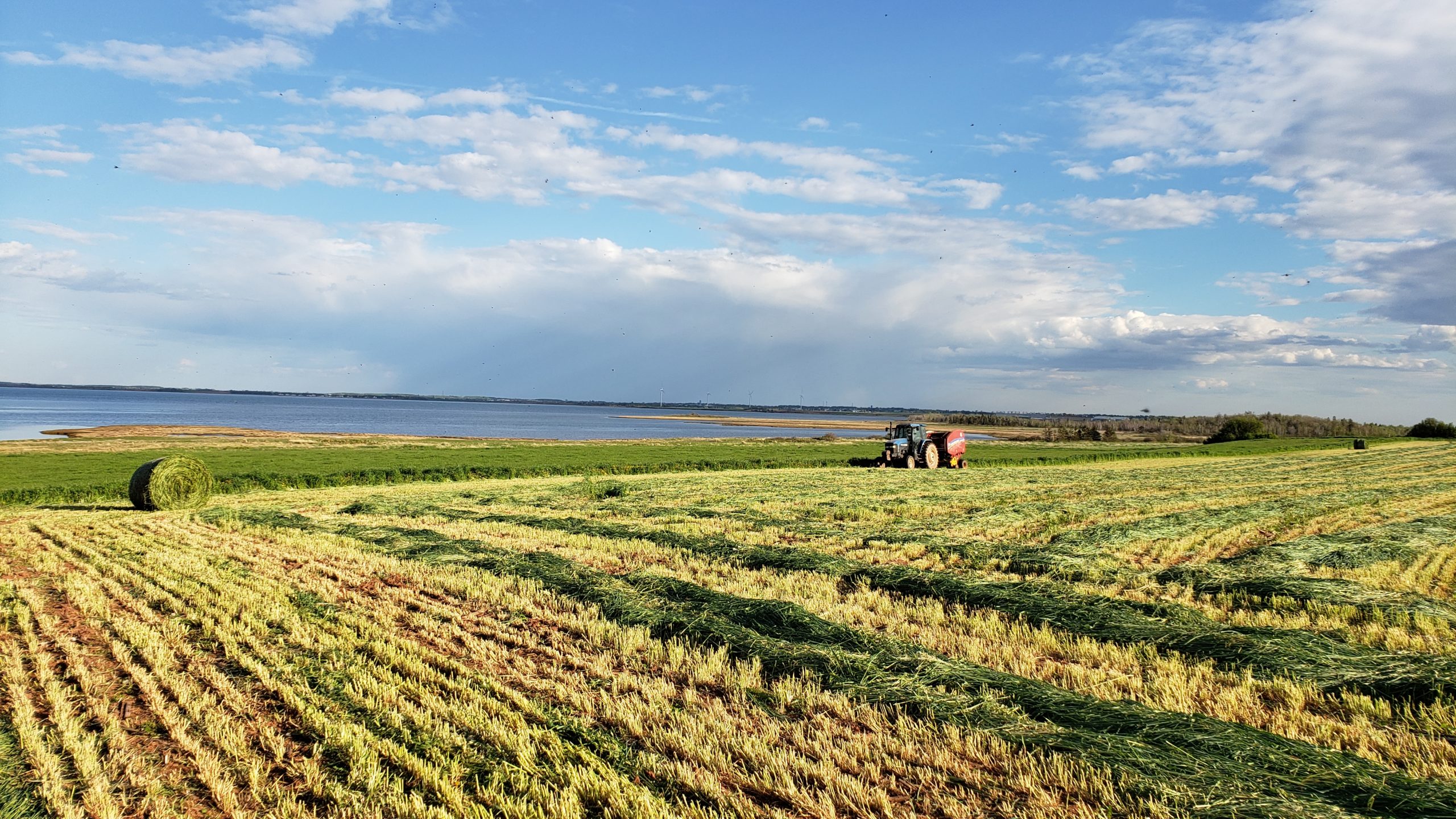
12 Jun Agronomy Update – June 12
Hi everyone. A lovely morning in PEI today. I saw a lot of forages mowed over the weekend for silage…hopefully to take advantage of a couple of good drying days before some forecasted rain on Wednesday. Sounds like there is still some potatoes to get planted here and there, mostly seed acres. Given that not much has emerged from the potatoes planted in May, I don’t think potatoes planted now will be that much behind this year.
Thinking about Forages:
On the topic of forages, I get a lot of questions about the value of hay, straw, and manure. I know a lot of folks are trying to figure out whether they are as well off to just mulch forages or to sell a crop of hay. As we’re getting into that time of year, I thought it might be timely to chat about that a little more. Some thoughts I have on the subject:
- Just mowing/mulching forages won’t do much to build organic matter. When you mulch a forage crop, you aren’t removing that carbon from the field, but it breaks down very quickly on the surface of the soil and won’t end up adding much carbon/organic matter to the soil. That being said, that forage crop is building organic matter through its roots…that’s what’s building organic matter. So the longer you can keep something green in your field, the better it will be for soil health/soil organic matter. That being said…don’t be afraid to sell a crop of hay if you have a market.
- Make sure you’re getting value for forages. With the increase in the cost of fertilizer in the last few years, you need to know how much to charge for hay and straw to make sure that you’re at least getting back the cost of the nutrients you export from the field with those crops.I did up a value of hay and straw calculator last year, and I’ve updated it with spring 2023 fertilizer prices. If you want to download it and play around, you can add your own fertilizer prices or your own bale sizes to customize it.By my calculations, a 4×5 round bale of alfalfa hay is worth $23 in P and K, and $17 just in K. A 4×5 bale of barley straw is worth $14/bale in P+K, or $12/bale just for potash. In the calculator, you can select a bunch of different forage crop examples to suit your farm.Therefore, if you were going to sell standing hay this summer that averages 5 bales to the acre, I would want to be getting at least $100/acre for red clover and about $115/acre for alfalfa to replace the P and K that you are exporting from the field. Whether that is reflected in rental arrangements, trading for manure, etc…that’s going to be a farm by farm decision. Feel free to download the calculator and play around with the numbers yourself.
- Also know the value of your manure. Using some average manure nutrient values provided by the PEI Dept of Agriculture from their recent manure management project, I have also done up a calculator for value of manure. In it, you can choose the type of manure and your rate to get a value per tonne or a value per acre. For example, a tonne of solid beef manure is worth about $15.50 per tonne in N, P and K. While you don’t get all of that N available in the first year, you do get most of it over 3 years…and it also helps quantify some of the value of organic matter that you get in manure…which is often hard to put a number to. This may help you when making decisions about trading hay or straw for manure. I haven’t built any costs for manure handling into this calculator, as that changes so much from farm to farm.
- Look after your underseeded forages! If you are planting alfalfa, I would not recommend using MCPA for your herbicide when spraying your grain. Embutox or Cobutox would be a better choice, as it is much easier on alfalfa and other legumes.Also, you will get the most improvement in organic matter and soil health if you have a vigorous, healthy forage crop. Make sure that your forages have enough nutrition, particularly in sandy/low OM fields or fields low in K. After grain harvest is a great time to apply solid manure or kick on some potash to feed those underseeded forage crops and get them off to a great start for next year.
Weed Management Reminders:
After the rain from the last 10 days, weeds have really started to take off in some fields. I know a lot of growers are likely in the sprayers today getting herbicides on after hilling. Below are a couple of resources that might be useful as you are making decisions about herbicide applications.
Weed Management in PEI Potato Rotations – Dr. Andrew McKenzie-Gopsill, 2021
Weed Control in Potatoes – NB Dept of Agriculture (Guide to Available Chemistry)
Quick reminder: a “pre-emerge” herbicide means before weed emergence, not before crop emergence. To get proper levels of control, that pre-emerge herbicide needs to be in the soil when weeds are emerging, so that they die while emerging. Now that we have adequate levels of soil moisture, pre-emerge herbicides will be more effective, as long as the weeds aren’t already established. If weeds are emerged but your potatoes aren’t, then you’re best to investigate what options you have for contact herbicides.
I hope everyone has a great week…looking forward to enjoying the sunshine today!
Ryan
